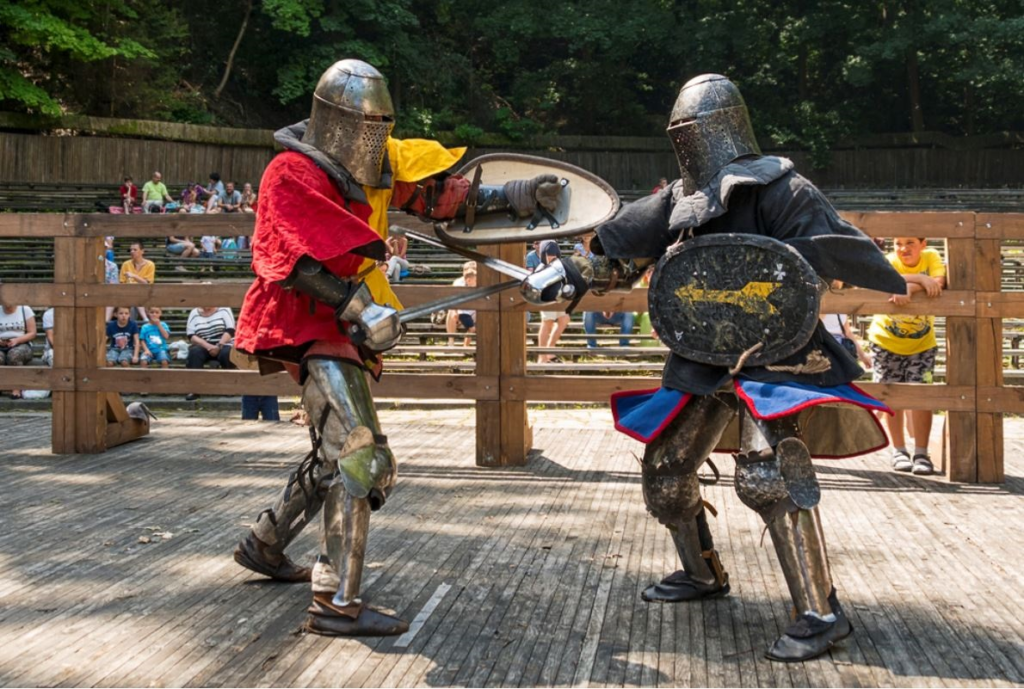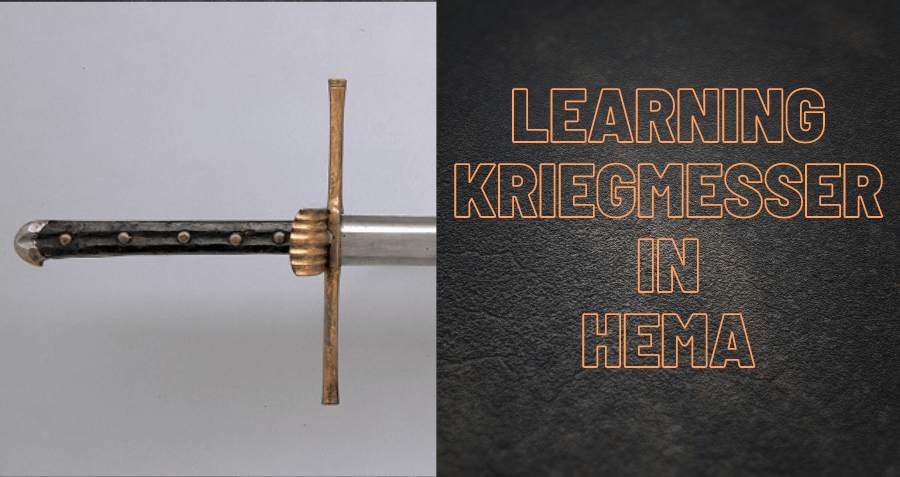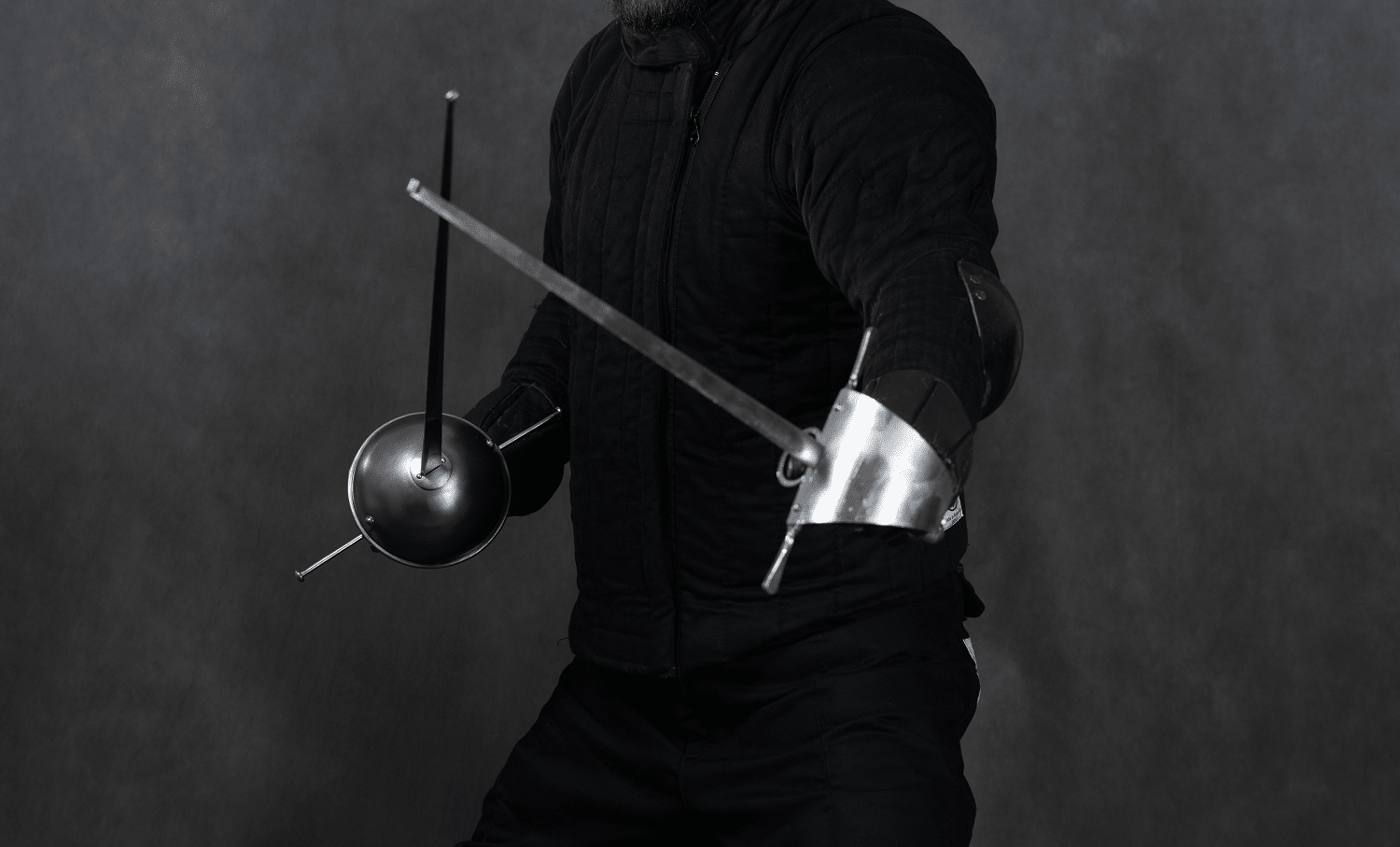Historical Medieval Battle (HMB) is a modern full contact fighting sport with steel blunted weapons such as swords, shields, axes, maces and halberds fought in steel armor of the Late Middle Ages. HMB is often also called Buhurt (also spelled as Burhurt), which is a corrupted form of the Old French word béhourd, meaning ‘to wallop‘. The HMB community is often confused by the general public with Historical European martial arts (HEMA) community so we thought we would write this article trying to explain the main differences and make it easy to understand.
What are the Differences between Historical Medieval Battle (HMB / Buhurt) and HEMA?
The following is a great video that really dives into this topic. You may need to watch it on YouTube with captions in English however.
Mainly the differences come down to the intentions and goals of each community.
The goal of the HEMA movement is to reconstruct the lost fighting traditions of Europe, with much of the focus on medieval sword fighting traditions of the Late Middle Ages and Early Renaissance but it also covers later eras as well, encompassing such things as military sabre, smallsword and broad sword fighting. It can even apply to unarmed systems of combat. Mainly, HEMA is an umbrella term for a wide range of European martial traditions that are reconstructed by modern day martial artists based on surviving documentation the original masters of these arts left behind for future generations.
While HEMA does have tournaments it is far from well organized, with different tournaments often having different quirks to the rulesets. Generally however they use scoring and rules borrowed from contemporary Olympic fencing.
By contrast HMB / Buhurt is expressly about reconstructing the idea of the medieval tournament, and practitioners may or may not study historical based sources for guiding their fighting styles used in these tournaments. Furthermore fighters do have single duel events with one on one matches where the first to strike their opponent ten times wins the match, but HMB also has ‘mass’ events where teams of 5, 10, 12, 16 and 30 fighters face off against to compete in teams, with the aim of causing opponents to fall to the ground after receiving continuous blows, whereas HEMA tournaments primarily use point based fencing scoring systems in one on one matches similar to contemporary Olympic fencing.
Another key difference is that HEMA fighters tend to use modern sporting gear, such as fencing masks and padded puncture resistant jackets that are modern improvements upon the padded gambeson of historical sword fighters. In HMB / Burhurt the armour used is steel reconstructions with designs based on historical steel plate armour, as was once used in historical fighting tournaments of the Late Middle Ages.
As HEMA is just an umbrella term for the practice of fighting traditions used in Europe, it is not mutually exclusive from Historical Medieval Battles (HMB / Burhurt). There are many athletes in HMB who also study historical sources of fighting techniques, the same ones studied by HEMA club members. The main difference is longsword is less popular in team based HMB events since it tends to be a weapon unsuitable for these kinds of matches compared to halberds or even mace and shield combinations, which are more popular.
Additionally as historical Medieval Battles use continuous combat rules instead of a point based scoring system, athletes can tend to get more injured as they receive far more blows per match than someone competing in a HEMA tournament will experience. Some of the most well known events in the Historical Medieval Battles community is Battle of Nations, which is an annual international historical medieval battles world championship held in Europe where HMB / Buhurt teams from around the world face off.
So in summary, HMB and HEMA can be somewhat similar in that they both involve historical based weaponry and fighting techniques, but they have different formats in their competitive events and tend to use different protective gear more suited to the goal.
tl:dr
The Historical Medieval Battle community is focused on reconstruction of the medieval tournament as a modern sport.
The Historical European Martial Arts is focused on reconstruction of the martial art practices of historical European peoples as a sport.
These different goals have some overlapping between them, but Historical Medieval Battle ( HMB / Buhurt) is far more specialized in a fighting sport from one specific time period (the Late Middle Ages) whereas HEMA is a more broad umbrella that covers many centuries of fighting traditions.
****
If you’d like to learn more information about historical fencing practices please check out our Learn HEMA page for a guide to learning about the historical weapon that interests you. You can also find more guides we’ve written about other topics at our Helpful Guides page.

















